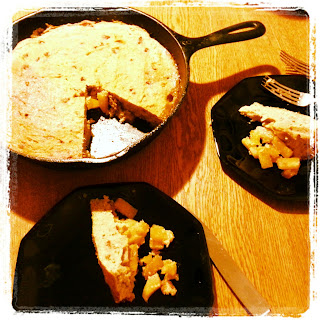(I'm a health nut) I've always wanted to get sugar out of my diet, in theory. In reality, it tastes so good! I've never thought of myself as a big sweet tooth, yet I've always had my favorite sweet treats. We've all probably heard that sugar is bad for us - it makes us gain weight, causes blood sugar spikes, feeds bad bacteria, and so on. Trying to quit sugar? Apparantly there are ex-crack addicts who said quitting sugar was harder than quitting crack. Maybe this is urban legend but from my experience trying, I'm inclined to believe it.
If you want to quit sugar, how far do you go? Just refined sugars? Do you allow maple syrup or honey since the former has good minerals and the later has enzymes among other healing properties. What about fruit? Where do you draw the line?
The GAPS diet makes the distinction between two kinds of sugars. The simplest sugars are called monosaccharides in contrast to their counter parts, which are calleddisaccharides because they are made of two monosaccharides.
Dr. Natasha Campbell-McBride explains the following information in her book which outlines the GAPS diet, called
Gut and Psychology Syndrome.
1. Monosaccharides (mono-sugars)
The most common monosaccharides are glucose, fructose and galactose. "These monosaccharides or monosugars can easily penetrate the gut lining; they do not need digestion," says Natasha. Honey and fruit are primarily made of glucose and fructose, which is why they are allowed on the GAPS diet.
Galactose is found in yogurt or other soured milk products. Natasha states in her book that most of our carbohydrates should come from monosugars.
2. Disaccharides (di-sugars)
The dissaccharides, or double sugars, are found in table sugar (sucrose), milk (lactose), and maltose (starch). When digestion is compromised, as is the reason why people do the GAPS diet, the
enterocytes that live on the villi in the small intestine, whose job it is to break down our foods, cannot break the double sugars down into monosugars. The double sugars "stay becoming major food for pathogenic bacteria, viruses, Candida, and other fungi, getting converted into a river of toxic substances which damage the gut wall even further and poison the whole body.
Grains, potatoes, yams, sweet potatoes, Jerusalem artichokes, and cassava all have a lot of starch in them, and are not allowed the GAPS diet for that reason. Whatever starch does get digested, breaks down into the double sugar maltose. But a GAPS person cannot break down the malatose, and so these foods are basically poison for GAPS people like myself.
So all fruit sugar is good right? Fruits actually do contain some sucrose and/or maltose. Natasha explains:
"Most fruit, particulary when unripe, contains some sucrose, which is a double sugar. That is why it is very important to eat ripe fruit. Most vegetables and some fruit contain a little bit of starch. However, the amount of sucrose and starch in fruit and non-starch vegetables are tiny compared to grains, starchy vegetables and table sugar. In the majority of people with digestive disorders, their gut lining can cope with these tiny amounts of sugar and starch from fruit and non-starch vegetables."
To see exactly how much of each kind of sugar different fruits and sweet things have, see this
list by Paleo expert Loren Cordain. Below, I'm going to be my mathematician self and crunch some numbers and some of my favor sweets.
The amount of double sugars are measured in grams per 100 grams of food item.
Less than 1 gram: Avocado, blackberries, blueberries, Casaba melon, sour cherries, elderberries, figs, grapes, lemon, lime, pomegranate, star fruit, tomato, dried prunes, raisins (including golden).
[1-5) grams: Apples, sweet cherries, grapefruit, guava, kiwi, orange, papaya, pears, pineapple, plum, raspberries, strawberries, watermelon.
[5-10) grams: Apricots, banana, cantaloupe, mango, nectarine, peach, dried apricots, dried figs, honey (5.7 grams).
Some high hitters are:
Dried peaches: 13.2 grams of double sugars in 100 grams of dried peaches.
Molasses: 34.7 grams of double sugars in 100 grams of molasses.
Dates: 44.6 grams of double sugars in 100 grams of dates.
Maple syrup: 75 grams of double sugars in 100 grams of maple syrup.
Table sugar: 97 grams of double sugars in 100 grams of table sugar.
While honey and table sugar have almost the same amount of total sugars, 82 grams and 97 grams respectively, table sugar has 17 times the amount of double sugars! And even dates, which are often used as an alternative sweetener in raw and Paleo recipes, have almost 8 times as many double sugars are honey.
Does anyone know where to get dried cherries without sugar added? What are your favorite recipes using only the foods with low double sugars? Please comment and let me know!



